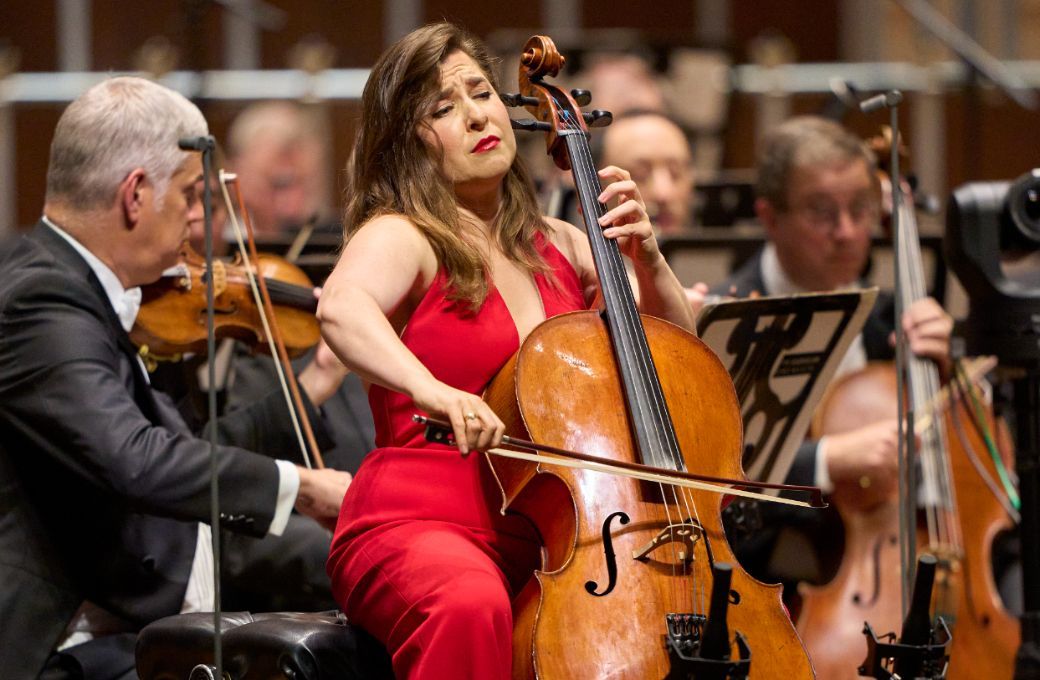Music director Franz Welser-Möst is back in town to close out the 2022-23 Cleveland Orchestra season. Most of his time in the coming weeks will be devoted to a wide-ranging festival anchored by Puccini’s Fanciulla del West. Ahead of that, he presented a particularly offbeat program with the participation of collaborators new and old.
Allison Loggins-Hull is in her first of three years as TCO’s Daniel R Lewis Composer Fellow. She maintains a dual career as a flutist, having founded the duo Flutronix which proliferates new works and challenges traditional boundaries. Outside the classical world, she has collaborated with artists ranging from Hans Zimmer to Lizzo (the latter a fellow flutist). Thursday evening saw the premiere of her work Can You See? Originally written in 2021 as a chamber piece for members of the New Jersey Symphony, the Cleveland version expands the work in both length and heft, making use of a very large orchestra.
The title alludes to a line from The Star-Spangled Banner, and the piece deconstructs the anthem, questioning the reality of the promises it made. Fragmentary material in the strings opened over an ominous ostinato, and the melody of the anthem took shape obliquely – so much so I’m not sure I would have recognized it without having read the program notes in advance. Though the composer seemed adept at utilizing the full orchestra, I wondered if the work would have spoken more directly in its chamber form. Nonetheless, I look forward to hearing more from her in the coming seasons.
Alisa Weilerstein is an artist deeply connected to Cleveland. She made her debut with this orchestra at age 13, and her father founded the famed Cleveland Quartet. It’s always a joy to see her back on the Severance Hall stage, this time with Barber’s 1945 Cello Concerto in hand. An angular gesture opened, with the cellist intensely projecting a rich, husky tone, sailing through the range of her instrument. She was in full command of the fearsome, thorny technical demands, not in the least during the daunting cadenza and the first movement’s bracing finish.

A wistful, long-bowed cello line marked the central Andante sostenuto, with fine interjections from oboist Frank Rosenwein. The bristling, high-octane finale evidenced the taut communication between soloist and orchestra. Weilerstein returned to the stage for an encore of a Bach Sarabande, radiant and pure, and I was reminded of her memorable recording of the complete Bach cello suites to an empty hall during the height of the pandemic.
Like the Barber, Prokofiev’s Fourth Symphony also came about on a commission from Serge Koussevitzky and the Boston Symphony. In Prokofiev’s case, the original 1930 work was to mark the BSO’s 50th anniversary. The composer returned to the score in 1947 for substantial revisions, so much so it was given a separate opus number. Welser-Möst opted for the latter in its belated first TCO performance. Moderate pacing helped give clarity to the work’s murky verbosity. The first movement was incessantly and perplexingly interrupted by sections marked Allegro eroico, though it wasn’t quite clear what was heroic about them. A more lyrical voice was found in passages from the principal winds in the slow movement, upended in due course by the bombastic, cacophonous finale. Though the completist in me relished the opportunity to hear an overlooked symphony, the lack of inspired material for the musicians to work with made matters decidedly uneven.
Of further note was the prelude performance, curated by Loggins-Hull, featuring chamber music by Black composers. It’s a treat to hear TCO players in the context of chamber music, and the composer herself joined on flute in her work The Pattern, prefaced with pieces by Carlos Simon and Bongani Ndodana-Breen.


